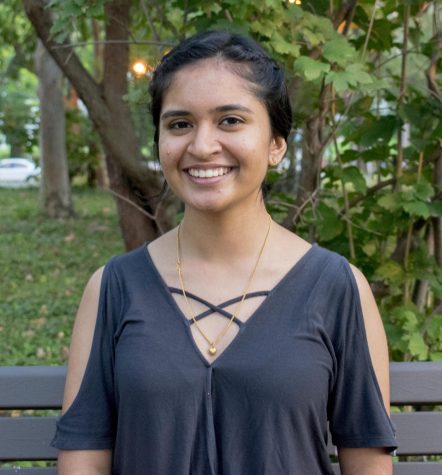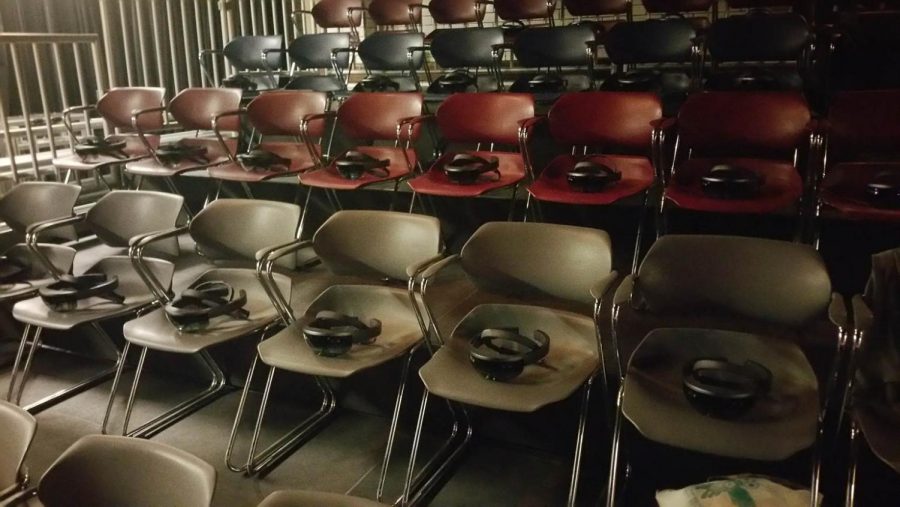Footwork in two realities
Dance finale integrates Hololens theatrical, visual effects
Courtesy Case Western Reserve University
The Dance Department’s “Vistas” concert made use of the Microsoft Hololens in its finale.
The Case Western Reserve University community had the opportunity to see a landmark performance for two weekends this November. In the finale of “Vistas”, the dance department’s fall concert, audiences can experience a pioneering performance using mixed-reality technology, Microsoft HoloLens.
The production is an original work by Gary Galbraith, professor in the dance department and artistic director of “Vistas,” who came up with the idea of using HoloLens in a dance production. Galbraith has a history of incorporating technology with dance. In 2010, he created “In Common Space,” a production connecting six dancers in three different locations, and “Strange Gardens.” The latter, which is a part of “Vistas,” incorporates what Galbraith calls “responsive media.”
“My creative focus has been specifically on how such technologies can be used in the creation, performance and production of dance, all the while keeping the focus on dance—not dance used as a means to showcase the technology,” said Galbraith.
Galbraith immediately saw the artistic potential in HoloLens, and proposed the idea to the Microsoft Corporation and CWRU’s Interactive Commons.Over the past year, Galbraith and the Interactive Commons worked closely together to bring “Imagined Odyssey” to life.
“Our larger vision is to bring people together who otherwise might not be talking,” said Erin Henninger, executive director of the Interactive Commons, according to a press release. “HoloLens is the type of tool that inspires them to think of solutions one has never considered.”
Because a project of this magnitude had not been attempted before, a significant part of the year was dedicated simply to background research and further developing the technology.
It was only after this past summer that the actual choreography itself was created. But this, too, was different from choreographing a normal performance.
“A limitation of the HoloLens is how to project a hologram behind something or someone,” Galbraith said. “We experimented with different techniques to address this, but in the end it was just easier and better for me to address this issue choreographically.”
To solve this problem, Galbraith made sure to keep in mind each hologram’s location on the stage. It was essential that the dancers not block the holograms unintentionally and that the holograms not block the dancers.
While the audiences saw the dancers interact with the elaborate visuals, the dancers had to interact with the holograms blind.
“I employed a number of techniques to help the dancers integrate this kind of real imagery,” said Galbraith. “Sometimes we would do a simple playback of mixed capture reality videos we did in the studio for the dancers to see everything. I would also project virtual spike marks on stage so that the dancers knew where the holograms were and how to interact with them.”
Throughout the whole experience, Galbraith and the other members of the CWRU dance department worked closely with Microsoft and the Interactive Commons to perfect “Imagined Odyssey.”
He said, “We were able to help them learn more about their technology through this atypical application and they were able to share more techniques, information and tools with the team here.”

Smruthi Maganti is a third-year student studying biology with a minor in public policy. After a year of copy editing, this is her first year as the A&E...


